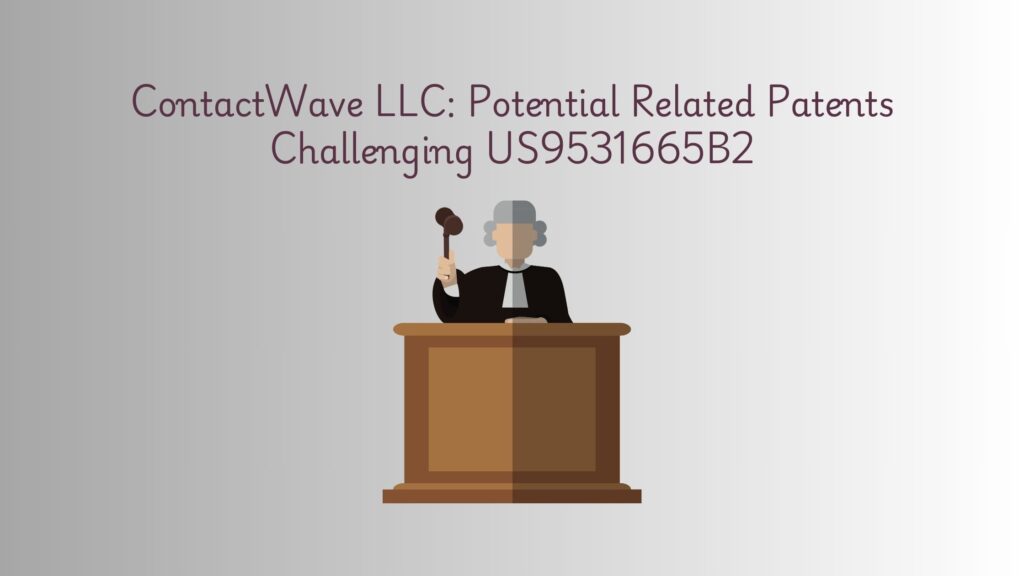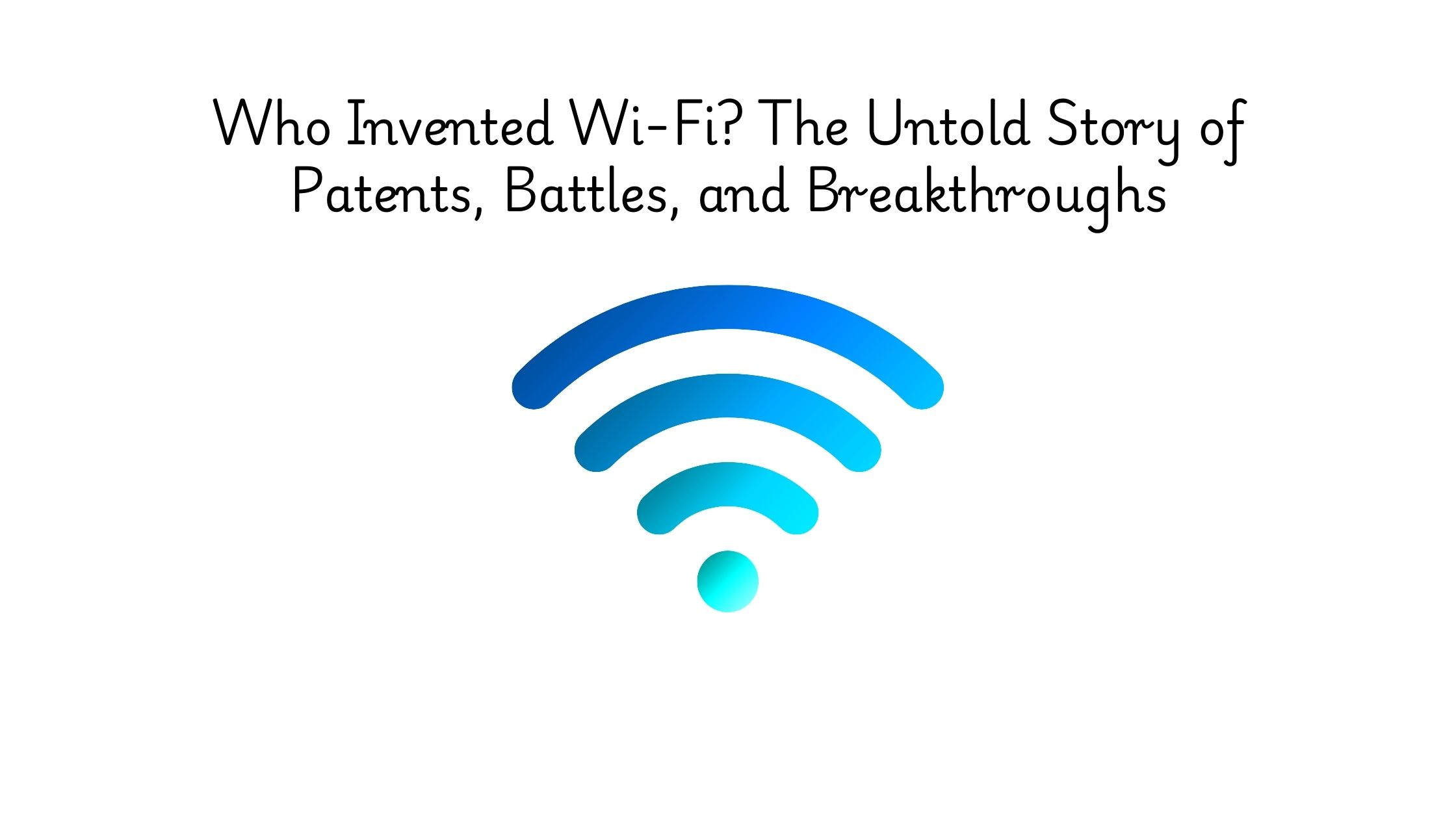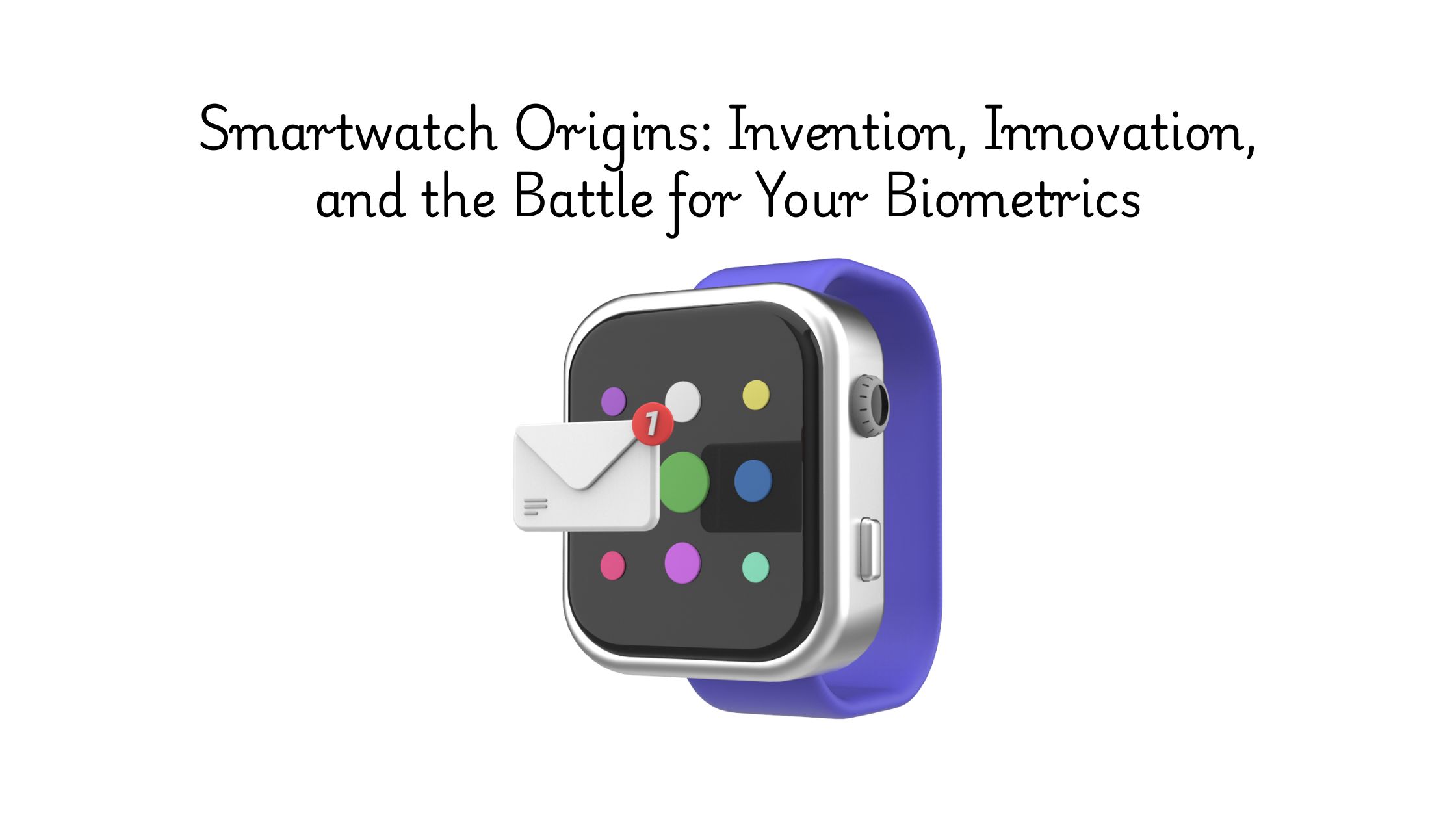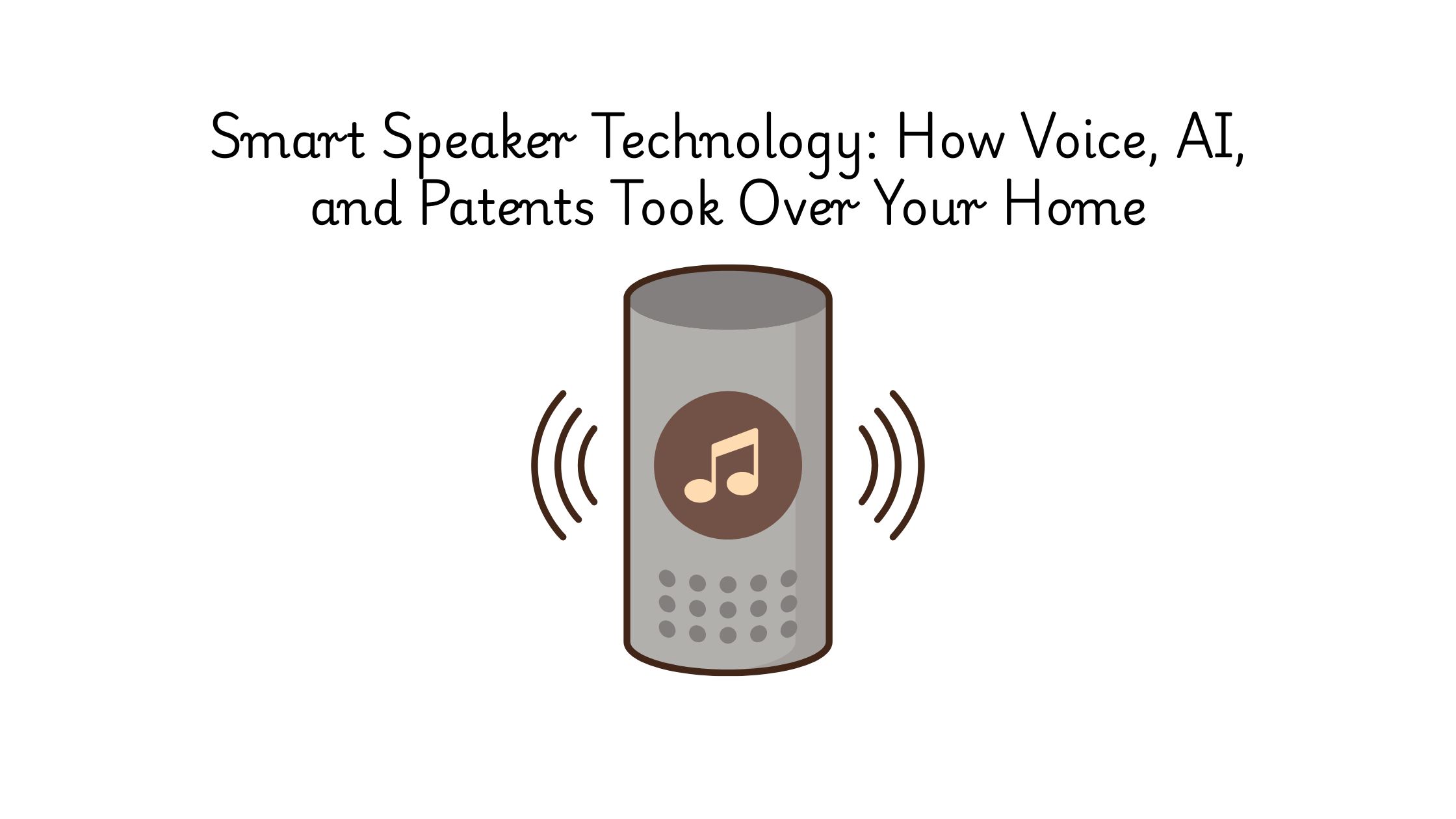US9531665B2, owned by ContactWave LLC, is currently at the center of multiple lawsuits against major retailers, including Macy’s, Best Buy, and Nordstrom. With five active cases and over 30 related parties, this litigation highlights the growing scrutiny around patented digital communication technologies, especially when enforced by non-practicing entities.
At its core, the patent covers a system that enables seamless digital communication between businesses and users across devices. Think of it like receiving a personalized message on your phone based on your interaction with a retail website or app. It transmits customer-specific data through network-based notifications, bridging backend systems and user devices in real time.
Why is it under fire? Countless companies widely use this kind of tech to deliver targeted notifications, promotions, or service alerts. The broad scope of the claims raises questions about its originality and enforceability, especially in a space where similar systems may have existed long before the filing.
To uncover related patents that could impact the case, tools like Google Patent Search help quickly locate and compare similar technologies. Just search by the patent number US9531665B2 to explore relevant results. Let’s break down what this patent covers.
Understanding Patent US9531665B2
Patent US9531665B2 outlines a system and method that allows users to send contact information from a web page directly to a mobile communication device without manual entry. The technology streamlines how consumers interact with business contact details online, making it easier to store and use that information on their phones.
Once a user selects contact information on a webpage, the system checks if their mobile device is approved and then sends a notification to that device. Upon acceptance, the contact info is transmitted and automatically stored in the phone’s contact list. Additionally, the system can manage vendor messages and personalize when and how they are sent to users, especially in competitive vendor environments.
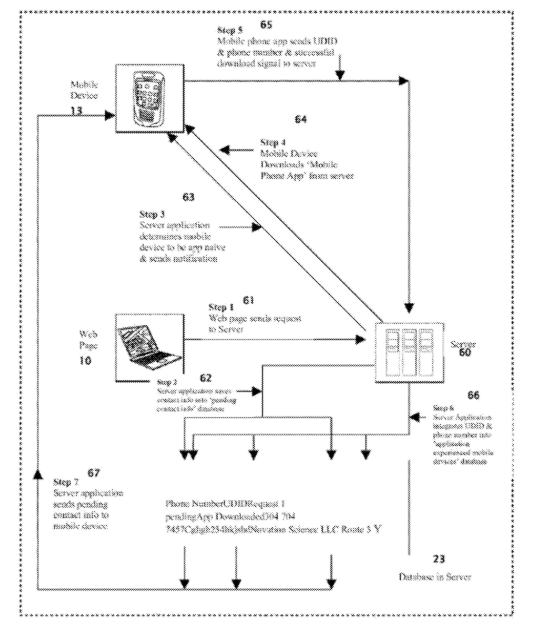
Source: US9531665B2
Its four key features are:
#1. Automatic contact delivery: Web users can send business contact info directly to their mobile devices via a server system.
#2. User consent verification: Ensures the user approves receiving the contact info before it is delivered and stored.
#3. Vendor messaging logic: Controls when messages from different vendors are sent based on prior user interactions and approvals.
#4. Mobile interest detection: Sends targeted messages only if a user’s activity suggests interest in a specific vendor’s product or service.
This patent’s broad claims around mobile communication and personalized data delivery are central to many modern e-commerce and customer engagement systems. Given the widespread use of similar features, defendants will likely challenge the patent’s originality and scope by looking for related patents that may have disclosed similar systems earlier.
Related Patent Reference for US8098153B2
#1. US7593721B2
This patent, published on September 22, 2009, outlines a system for delivering advertisements and business contact information to mobile devices such as cell phones. It uses a central contact information database to transfer vendor-related data to users based on their interactions.
Key Features of this Related Patent:
- Central server application – Partially described, focusing on advertising functions rather than emergency messaging.
- Access to user data – The system mentions a database of individual and business contact information but lacks full mapping to user accounts.
- No messaging validation or response handling – The patent does not describe mechanisms for message acceptance, verification, or sequential delivery based on user actions.
Which features of US8098153B2 are disclosed by US7593721B2?
| Key Feature of Claim 1 | Disclosure Status |
| A server runs a software server application for sending messages from vendors to mobile users’ communication addresses | Partially Disclosed |
| The server application can access multiple mobile user accounts, identifying mobile users and their communication addresses. | Partially Disclosed |
Key Excerpt from US7593721B2:
“The present invention relates to an apparatus, method, and system for advertising on communication devices such as cellular phones. A ‘central contact information database’ contains contact information of businesses and individuals, which can be downloaded to communication devices… The advertisements and contact information are paired in the database, but the system does not monitor or verify user acceptance.”
#2. KR20010100637A
Published on November 14, 2001, this patent describes a method for delivering advertising content via email, including promotional messages and so-called “lucky letters” containing incentives. The email is sent by a mail server to users’ communication addresses, including those not actively visiting a website. This system supports mass communication through user email databases and demonstrates several features aligned with US8098153B2.
Key Features of this Related Patent:
- Mail server-based message delivery – Fully disclosed, with a clear software system for sending vendor advertisements to user addresses.
- Access to user accounts and addresses – The server uses registered member information, such as email addresses, to target users.
- Direct advertisement communication – Emails with promotional content are sent directly to individual communication users.
- No user acceptance or message sequencing – The system does not include acceptance handling, verification, or follow-up messaging logic.
This is how feature mapping from the tool looks like:
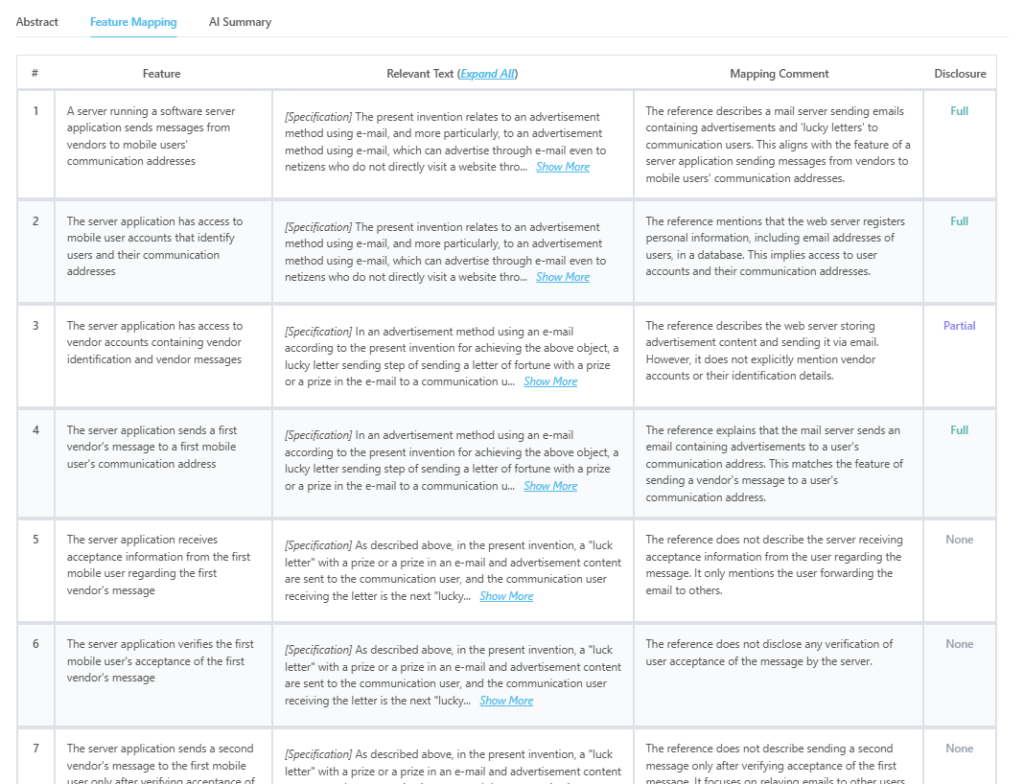
Source: GPS
Which features of US8098153B2 are disclosed by KR20010100637A?
| Key Feature of Claim 1 | Disclosure Status |
| The server application sends a first vendor’s message to a first mobile user’s communication address. | Fully Disclosed |
| The server application can access multiple mobile user accounts to identify mobile users and their communication addresses. | Fully Disclosed |
| The server application sends a first vendor’s message to a first mobile user’s communication address | Fully Disclosed |
Key Excerpt from KR20010100637A:
“In an advertisement method using e-mail… a lucky letter sending step of sending a letter of fortune with a prize or advertisement to a communication user is included. The system uses stored personal information, including email addresses, to deliver targeted messages directly to users, even if they have not visited a particular site.”
#3. KR20030005596A
Published on January 23, 2003, this patent introduces a system (AD-ware) for delivering advertisements and informational content to users through wireless Internet terminals. It features a robust infrastructure for managing user data, vendor information, and advertisement delivery. The system also allows user interaction with ads, such as clicks or engagement events, which suggests partial user feedback capabilities.
Key Features of this Related Patent:
- Centralized server system (AD-ware) – Fully disclosed with a software-driven method for message delivery.
- Access to user and vendor databases – The system includes member management tools and advertisement databases.
- Interactive advertising – User interaction with ads is discussed, though acceptance tracking is only partially disclosed.
- No sequential message logic – There’s no verification or conditional delivery based on user acceptance.
Which features of US8098153B2 are disclosed by KR20030005596A?
| Key Feature of Claim 1 | Disclosure Status |
| The server application has access to multiple mobile user accounts identifying mobile users and their communication addresses. | Fully Disclosed |
| The server application has access to multiple vendor accounts, each containing vendor identification and multiple vendor messages | Fully Disclosed |
| The server application sends a first vendor’s message to a first mobile user’s communication address. | Fully Disclosed |
| The server application receives acceptance information from the first mobile user indicating acceptance of the first vendor’s message. | Fully Disclosed |
| The server application receives acceptance information from the first mobile user indicating acceptance of the first vendor’s message | Partially Disclosed |
Key Excerpt from KR20030005596A:
“The present invention (AD-ware) spreads wireless Internet advertisements by building and managing member databases and advertisement databases. The system transmits advertising content to users’ terminals and supports interactive formats such as AD Banner, Blank Banner, and AD Bar… allowing users to click or engage with the content.”
#4. CN1433621A
Published on July 30, 2003, this patent describes a mobile-based interactive transaction and survey system that utilizes SMS messaging to connect users with vendors. Users initiate interaction (“pull” service), and the system handles message delivery, response collection, and validation. The system stores mobile numbers and associates user responses with advertiser campaigns, demonstrating significant overlap with the logic and flow of US8098153B2.
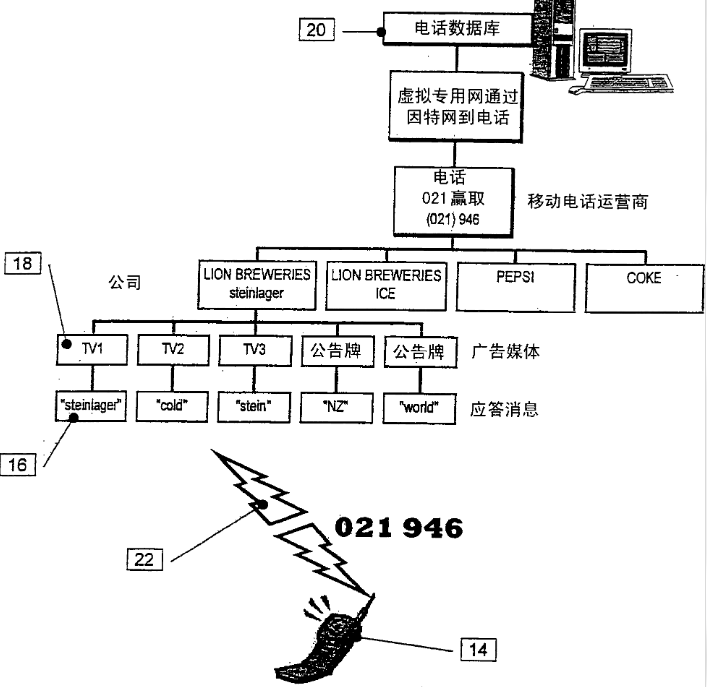
Source: CN1433621A
Key Features of this Related Patent:
- SMS-based server communication – Fully disclosed with messaging between vendors and mobile users.
- User and vendor data access – User numbers and advertiser campaigns are stored and managed.
- Interactive validation – Participant responses are matched to a reference list for acceptance verification.
- No sequential messaging logic – The system doesn’t explicitly require verification before sending a second message.
Which features of US8098153B2 are disclosed by CN1433621A?
| Key Feature of Claim 1 | Disclosure Status |
| A server runs a software server application for sending messages from vendors to mobile users’ communication addresses | Fully Disclosed |
| The server application has access to multiple vendor accounts, each containing vendor identification and multiple vendor messages. | Partially Disclosed |
| The server application sends a first vendor’s message to a first mobile user’s communication address. | Partially Disclosed |
| The server application receives acceptance information from the first mobile user indicating acceptance of the first vendor’s message. | Fully Disclosed |
| The server application verifies the first mobile user’s acceptance of the first vendor’s message. | Fully Disclosed |
| The server application verifies the first mobile user’s acceptance of the first vendor’s message | Fully Disclosed |
Key Excerpt from CN1433621A:
“An interactive transaction and survey system uses SMS messages processed by a central computing device. Responses such as ‘PACER’ or ‘ROCKET’ are matched to a reference list, and reply messages are sent accordingly. The system supports associating participants’ replies with specific advertiser campaigns.”
#5. US20020082938A1
Published on June 27, 2002, this patent presents a system for managing call-through advertisements between advertisers and users of web-enabled telephony devices. The system supports targeted ad delivery, user interaction tracking, and real-time reporting. While the invention doesn’t fully implement sequential message logic, it does manage interactions between advertisers and users through a server system.
Key Features of this Related Patent:
- Advertisement server functionality – Partial disclosure of server applications sending ads to users.
- Vendor-side ad targeting – Vendors are associated with messages; however, user and vendor account structures are only implied.
- User engagement logging – User clicks and interactions are tracked, aligning partially with acceptance handling.
- No verification or message sequencing – The system does not verify acceptance or gate further messages based on it.
Which features of US8098153B2 are disclosed by US20020082938A1?
| Key Feature of Claim 1 | Disclosure Status |
| A server runs a software server application for sending messages from vendors to mobile users’ communication addresses | Partially Disclosed |
| The server application sends a first vendor’s message to a first mobile user’s communication address. | Partially Disclosed |
| The server application receives acceptance information from the first mobile user indicating acceptance of the first vendor’s message. | Partially Disclosed |
| The server application receives acceptance information from the first mobile user indicating acceptance of the first vendor’s message | Partially Disclosed |
Key Excerpt from US20020082938A1:
“The invention facilitates call-through advertising between advertisers and users of Web-enabled telephone devices by tracking user interaction with delivered advertisements and enabling reporting based on that engagement. However, no conditional message delivery based on acceptance is implemented.”
Feature Comparison Table
| Key Feature of Claim 1 | US7593721B2 | KR20010100637A | KR20030005596A | CN1433621A | US20020082938A1 |
| The server application can access multiple mobile user accounts identifying mobile users and their communication addresse.s | Partially Disclosed | Fully Disclosed | Fully Disclosed | Fully Disclosed | Partially Disclosed |
| The server application has access to multiple vendor accounts, each containing vendor identification and multiple vendor messages | Partially Disclosed | Fully Disclosed | Fully Disclosed | Partially Disclosed | Not Disclosed |
| The server application has access to multiple vendor accounts, each containing vendor identification and multiple vendor messages. | Not Disclosed | Not Disclosed | Fully Disclosed | Partially Disclosed | Partially Disclosed |
| The server application receives acceptance information from the first mobile user indicating acceptance of the first vendor’s message. | Not Disclosed | Fully Disclosed | Fully Disclosed | Fully Disclosed | Partially Disclosed |
| The server application verifies the first mobile user’s acceptance of the first vendor’s message. | Not Disclosed | Not Disclosed | Partially Disclosed | Fully Disclosed | Partially Disclosed |
| The server application sends a second vendor’s message to the first mobile user only after verifying acceptance of the first vendor’s message. | Not Disclosed | Not Disclosed | Not Disclosed | Fully Disclosed | Not Disclosed |
| The server application sends a second vendor’s message to the first mobile user only after verifying acceptance of the first vendor’s message | Not Disclosed | Not Disclosed | Not Disclosed | Not Disclosed | Not Disclosed |
How to Find Related Patents Using Global Patent Search
When working with a patent like US8098153B2, uncovering related patents is essential, whether you are preparing a response to enforcement, evaluating overlap, or assessing competitive technologies. The Global Patent Search tool delivers fast, focused insights for legal and strategic analysis.
Here’s how GPS empowers your patent research:
- Search by patent number or keywords – Input a patent like US8098153B2 to uncover a network of closely related technologies.

Source: GPS
- Feature mapping tools – Instantly align key claim elements with existing patents and view comparative results.
- Prioritize high-relevance matches – Focus on references that clearly disclose similar features.
- Access detailed side-by-side reviews – See which elements align and where differences appear across references.
- Support strategic decision-making – Whether planning the next legal steps or preparing a technical rebuttal, GPS delivers the clarity you need.
With GPS, discovering related patents becomes a streamlined, data-driven process, giving your team an edge where it matters most.
Power Your Patent Strategy with Precision
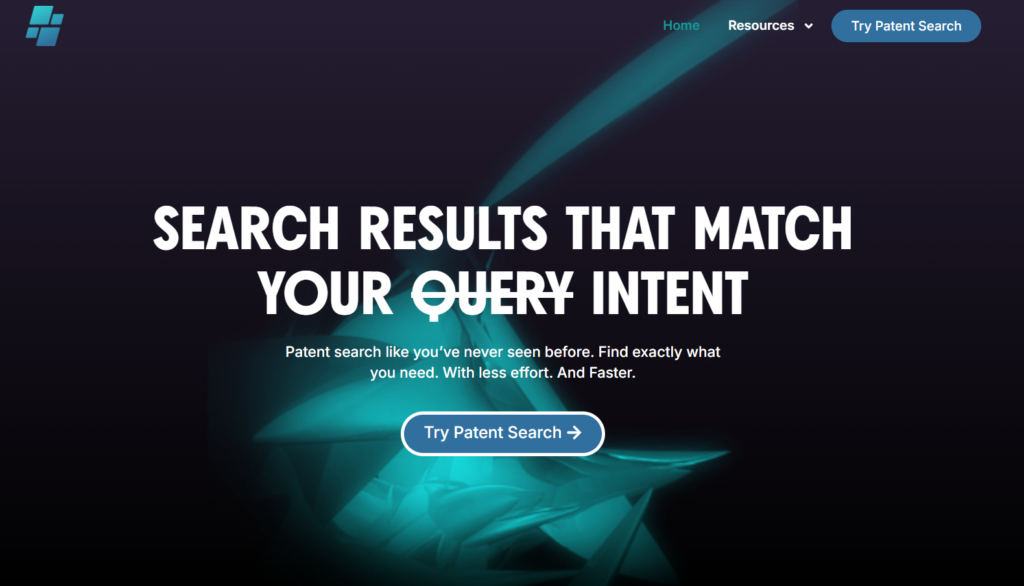
Navigating the complexities of a patent like US8098153B2 requires more than instinct—it demands insight. The Global Patent Search tool helps attorneys, analysts, and innovators uncover relevant related patents in minutes, not weeks.
Why GPS is the smart choice:
- Instant discovery – No more manual sifting through databases.
- Precise feature mapping – See exactly how other patents stack against your target claims.
- Strategic intelligence – Use concrete data to reinforce your next legal or technical move.
Don’t just react. Take control of the patent landscape with GPS and build your case with absolute confidence.
Disclaimer: The information provided in this article is for informational purposes only and should not be considered legal advice. The related patent references mentioned are preliminary results from the Global Patent Search tool and do not guarantee legal significance. For a comprehensive related patent analysis, we recommend conducting a detailed search using GPS or consulting a patent attorney.

